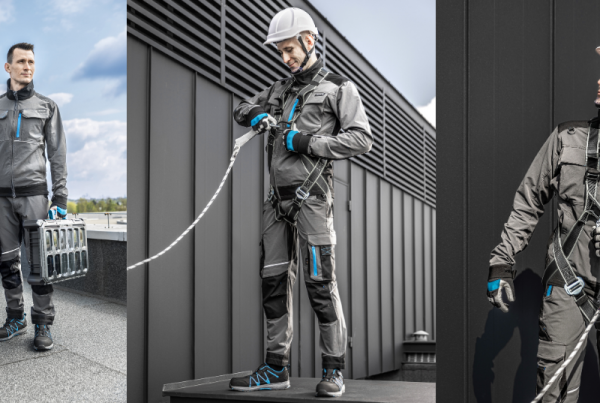Half masks are used to protect against small-sized atomized solid particles, such as dust, smoke, mists (they do not protect against gases). Protective half-masks made of non-woven fabric are divided into three classes of filtration efficiency:
P1 – retain approximately 80% of particles that are smaller than 2 micrometres
P2 – retain approximately 94% of particles that are smaller than 0.5 micrometres
P3 – retain approximately 99.95% of particles that are smaller than 0.5 micrometres
Class P1, P2, P3 protective half masks are tested in accordance with the requirements of the PN-EN 149: 2001 standard.
| Filtration class | Maximum allowable concentration of harmful substances (NDS) | Filtration efficiency | Type of aerosol | Application |
|---|---|---|---|---|
| P1 | 4 x NDS | 80% | dust, smoke, mist | agriculture and food industry, application in construction, quarries, cement plants, wood industry in the processing of softwood; protects against dust: calcium carbonate, natural and synthetic graphite, gypsum, chalk, cement, plaster, marble, zinc oxide, plant pollen, cellulose, sulphur, cotton, ferrous metal filings, carbon dust containing less than 10% free silica |
| P2 | 10 x NDS | 94% | dust, smoke, mist | P1 + dusts of asbestos, copper, barium, titanium, vanadium, chromium, manganese, hardwood dust, carbon dust containing free silica above 10%, mining, chemical and metallurgical industries (version with exhaust valve), in the processing of hardwood |
| P3 | 30 x NDS | 97% | dust, smoke, mist | P1 + P2 + high concentration of respirable dust, protects during welding and soldering, protects against dust containing: beryllium, antimony, arsenic, cadmium, cobalt, nickel, radium, strychnine, radioactive particles |
Worth knowing
Half masks increase the inhalation resistance. The longer they are used, the more difficult breathing becomes due to absorbed dust. What’s more, their effectiveness decreases with increasing carbon dioxide and water vapor between the half-mask cup and the face (the so-called dead space). The concentration of carbon dioxide in the dead space increases with each subsequent exhalation. Therefore, masks should be replaced frequently. In order to improve the comfort of use, one-way exhaust valves are used, which accelerate the circulation of gases. When considering the purchase of a dust mask, it is worth choosing those with this type of convenience.
For the effectiveness of the mask and the comfort of use, it is important that the mask fits properly. Failure to seal the mask on its periphery results in an increase in the so-called total leakage, and consequently, loss of filtration efficiency. Loss of tightness can be caused by, for example, the facial hair of its user.




